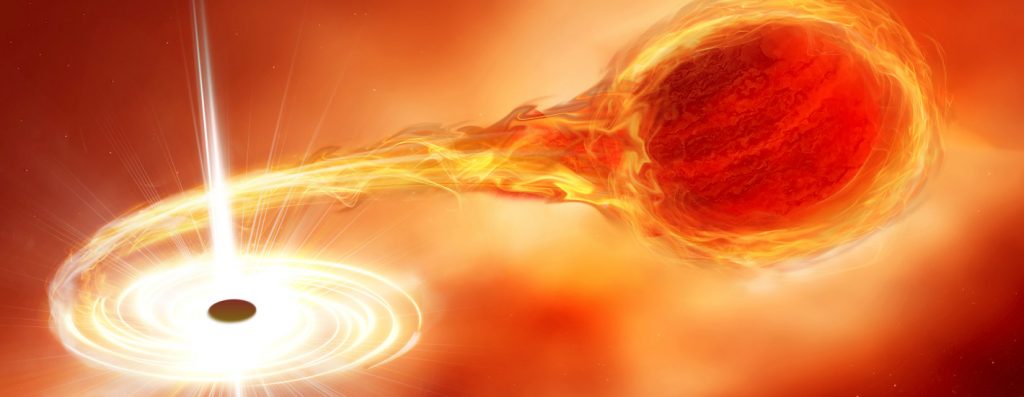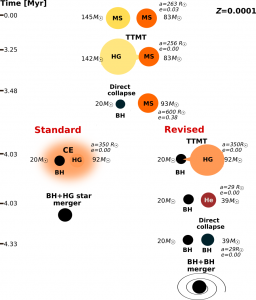
Double black hole mergers strongly dominate the gravitational wave signals which are being detected by LIGO/Virgo instruments. So far, over 50 confirmed black hole – black hole mergers has been publicly announced together with the basic parameters estimates such as the masses and effective spins. The origin of all of those signals is however still an open question as there are many potential formation scenarios which could reconstruct the detections. Popular proposed formation channels are the isolated binary star evolution in the galactic fields or the dynamical interactions in the globular clusters. Both are subjects of many uncertainties. One of the methods of putting constrains on the possible origin of the gravitational wave signals is simulating evolution of a large synthetic populations of massive star system (black hole-black hole mergers progenitors) with a proper initial conditions. The next step is checking which of the tested models is the best match for the reported parameters of the mergers.
Common envelope (CE; unstable mass transfer) is commonly believed to be a mandatory phase in the formation of double black hole mergers in isolated binary evolution scenario. In CE concept, when one of the binary components expands (e.g. during a giant phase), the second companion may end up in the envelope of the companion. The orbital energy of such a system is transferred to the giant’s envelope due to various drag forces. This may result in the binary orbit shrinking and eventual envelope ejection. If the system survive CE phase, the final formed binary black hole system may become close enough to merge due to a gravitational wave emission.
However, more and more recent studies indicates that mass transfer is stable on wider parameter space. This means that the systems goes through CE less frequently than previously thought. Astronomers from Nicolaus Copernicus Astronomical Center, led by a PhD student Aleksandra Olejak, took into account those results and implemented a revised mass transfer stability criteria into their statistical simulations of the formation of double black hole systems. Due to those modifications they obtained a new possible dominant scenario of binary evolution leading to the formation of double black hole mergers. This new scenario instead of CE, consists of two episodes of stable mass transfer on different timescales. Many binary systems instead of going through CE phase (which in the case of a giant star donors with not well separated core and the envelope ends with a system merger), goes through a thermal timescale mass transfer. During this type of a mass transfer lots of mass in ejected from the system together with the orbital angular momentum, as the mass accumulation on a black hole companion is strongly limited.

The group found that their modifications of highly uncertain assumptions on the mass transfer physics significantly affect all the statistical properties of the formed synthetic double black hole mergers such as the frequency of those events (so called local merger rate density), masses and spin parameters distributions. Described results are published in Astronomy & Astrophysics journal in the article “Impact of common envelope development criteria on the formation of LIGO/Virgo sources” A. Olejak, K. Belczynski and N. Ivanova A&A, 651 (2021) A100. Paper is also available on arXiv:2102.05649.
